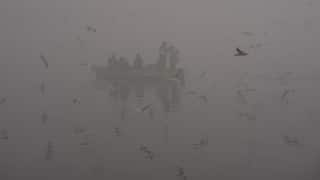Primary Steel Industry To Face Problems In H2 On Weak Prices And Increasing Costs: ICRA
The overall industry’s operating profit margins in H2 FY2024 are expected to be lower compared to H1 FY2024, largely driven by weaker profitability from the blast furnace operators, Icra said.

The primary steel industry is likely to experience a challenging environment during the second half of FY24 amid increased input cost and weakening steel prices, according to Icra.
The domestic hot rolled coil (HRC) prices have corrected by 6.7 per cent since early October 2023, while the rebar prices witnessed a fall of 4.7 per cent in the same period, the ratings agency said.
The overall industry’s operating profit margins in H2 FY2024 are expected to be lower compared to H1 FY2024, largely driven by weaker profitability from the blast furnace operators, Icra said in its latest report.
Also Read : Govt Could Disburse Incentives Worth Rs 79 Crore Under PLI Scheme For White Goods In Q4FY24
It further said it "expects the operating environment of the domestic steel industry to get more challenging in the second half of the current fiscal as elevated raw material costs and weakening steel prices nibble at profit margins." While seaborne coking coal prices have been volatile since Q2 FY2024, thermal coal prices have remained more range-bound.
Coupled with the higher resilience of long steel prices, the operating profit margins of secondary steelmakers are projected to be higher by 75 basis points in H2 over H1 of FY2024, even as primary producers, which are primarily blast furnace players, are slated to witness a drop in operating margins by 135 basis points over the same period.
Primary steel players manufacture steel through blast furnace route and the secondary industry uses electric arc furnaces and induction furnaces to manufacture steel.
Jayanta Roy, Senior Vice-President and Group Head, Corporate Sector Ratings, Icra said "Due to supply-related constraints in Australia, spot premium hard coking coal cargoes unexpectedly rallied up by 50-55 per cent in a short span of three months, reaching an interim high of USD 363/MT (metric tonne fob Australia) in mid-October 2023." The blast furnace operators have been diversifying their coal sourcing by progressively reducing the share of coking coal imports from Australia from 71 per cent in FY2022 to 52 per cent in H1 FY2024, he added.
(This report has been published as part of an auto-generated syndicated wire feed. Except for the headline, the content has not been modified or edited by ABP LIVE.)






































